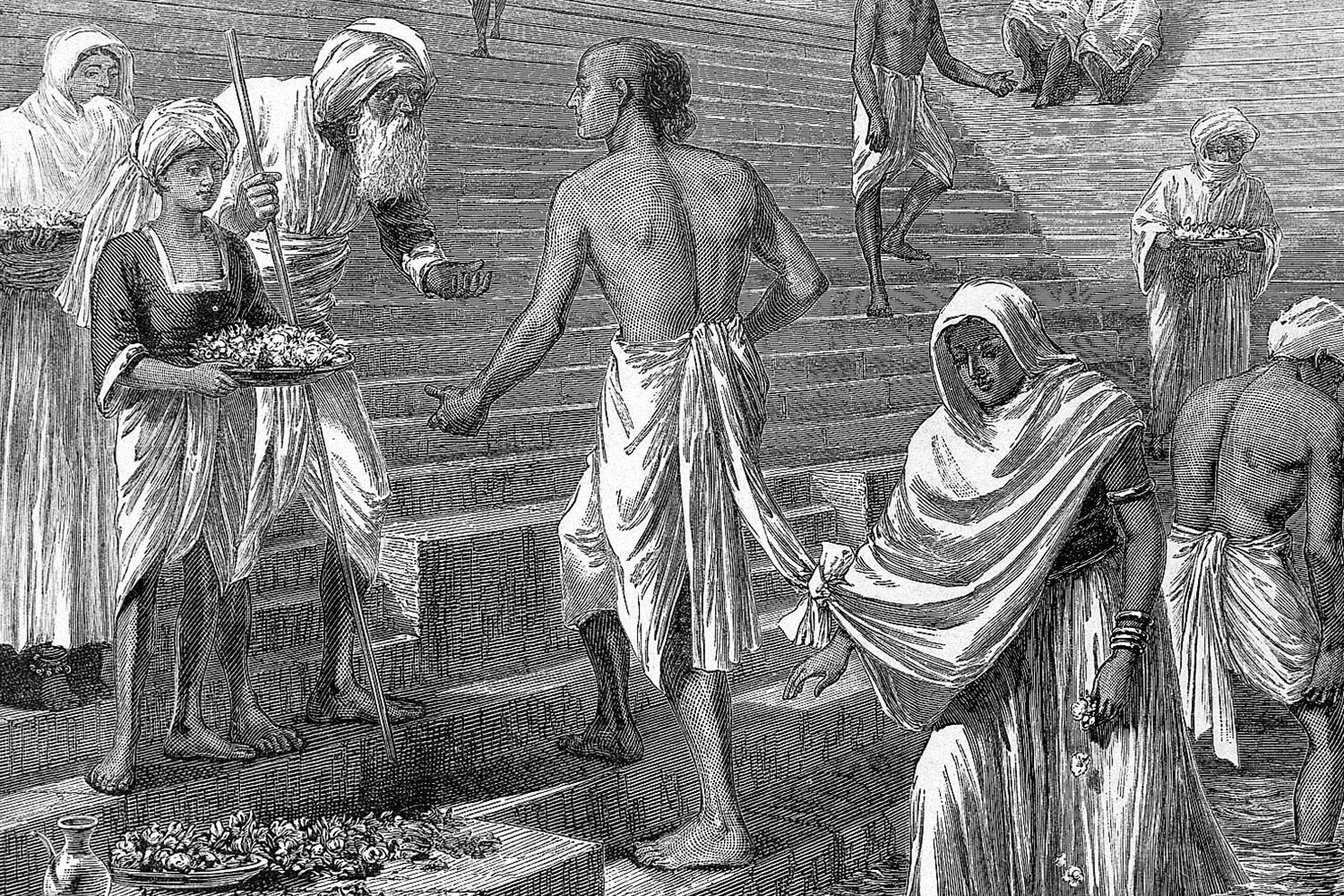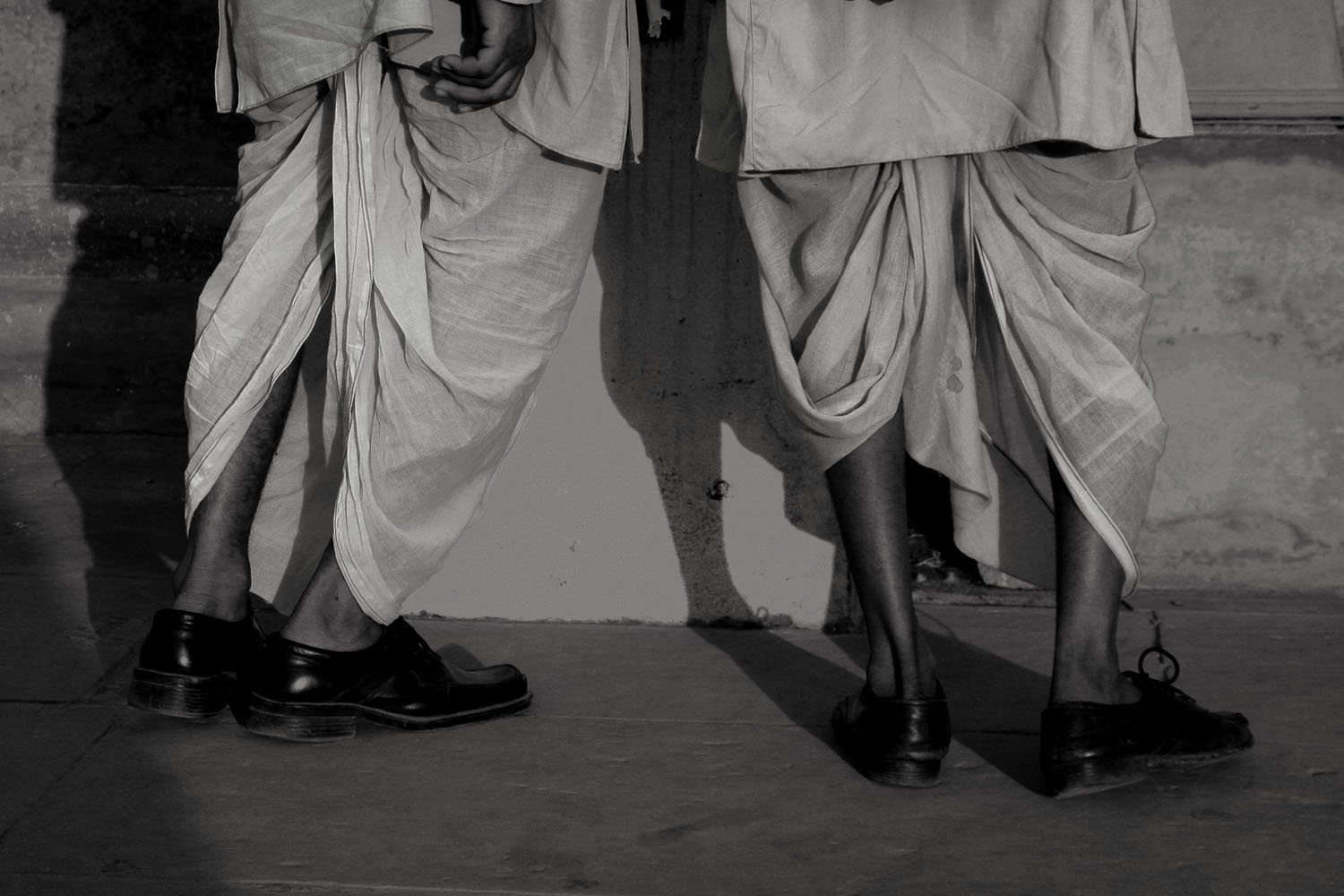ARTICLE
Dhoti
A long, unstitched piece of cloth draped around the lower body, the dhoti is a term for the traditional garment worn by men in different parts of India. It is usually paired with a kurta or a shirt. The word dhoti derives from the Sanskrit word dhauti, meaning “to clean or wash,” referring to the tradition of washing one’s clothing every day. Historically, the dhoti may have descended from an ancient garment called the antariya, which was worn around the waist and draped similar to the modern day dhoti.
Like the lungi, the dhoti is mostly made of cotton, however dhotis in other fabrics such as silk and tussar are often worn for special occasions. The most common method of wearing a dhoti involves knotting the two sides of the fabric at the centre of the waist, looping one side between the legs and pleating and tucking it at the back, while the remainder of the fabric is pleated and tucked in securely at the front. The result is a loose, trouser-like drape that typically ends at the ankles. The length of an average dhoti can measure anywhere between 3.6 m (which is wrapped around the waist like a sarong) to 4.55 m (meant to be looped and tucked at the back of the waist).
The dhoti is known by different names in different parts of India, such as dhotiyu in Gujarat, chadra in Punjab and dhotar in Maharashtra. The variations in the garment itself occur in the style of draping and the length at which it is worn. For example, the one worn in Bengal, called the kochano dhuti, includes pleats made at one end of the fabric, which are either held in the hand or tucked in at the front.
Bibliography
Our website is currently undergoing maintenance and re-design, due to which we have had to take down some of our bibliographies. While these will be re-published shortly, you can request references for specific articles by writing to hellomapacademy@map-india.org.








